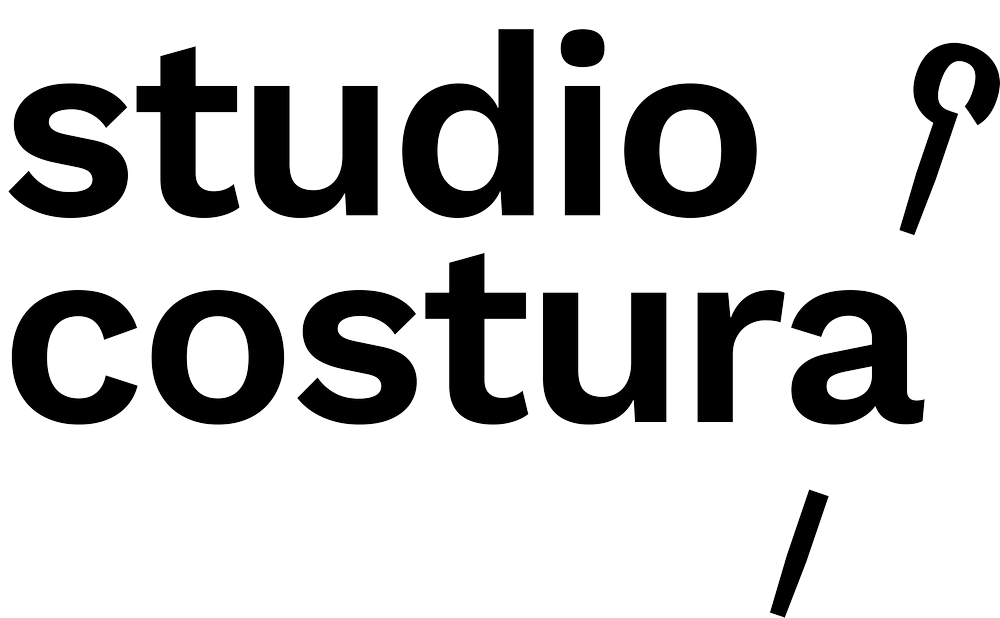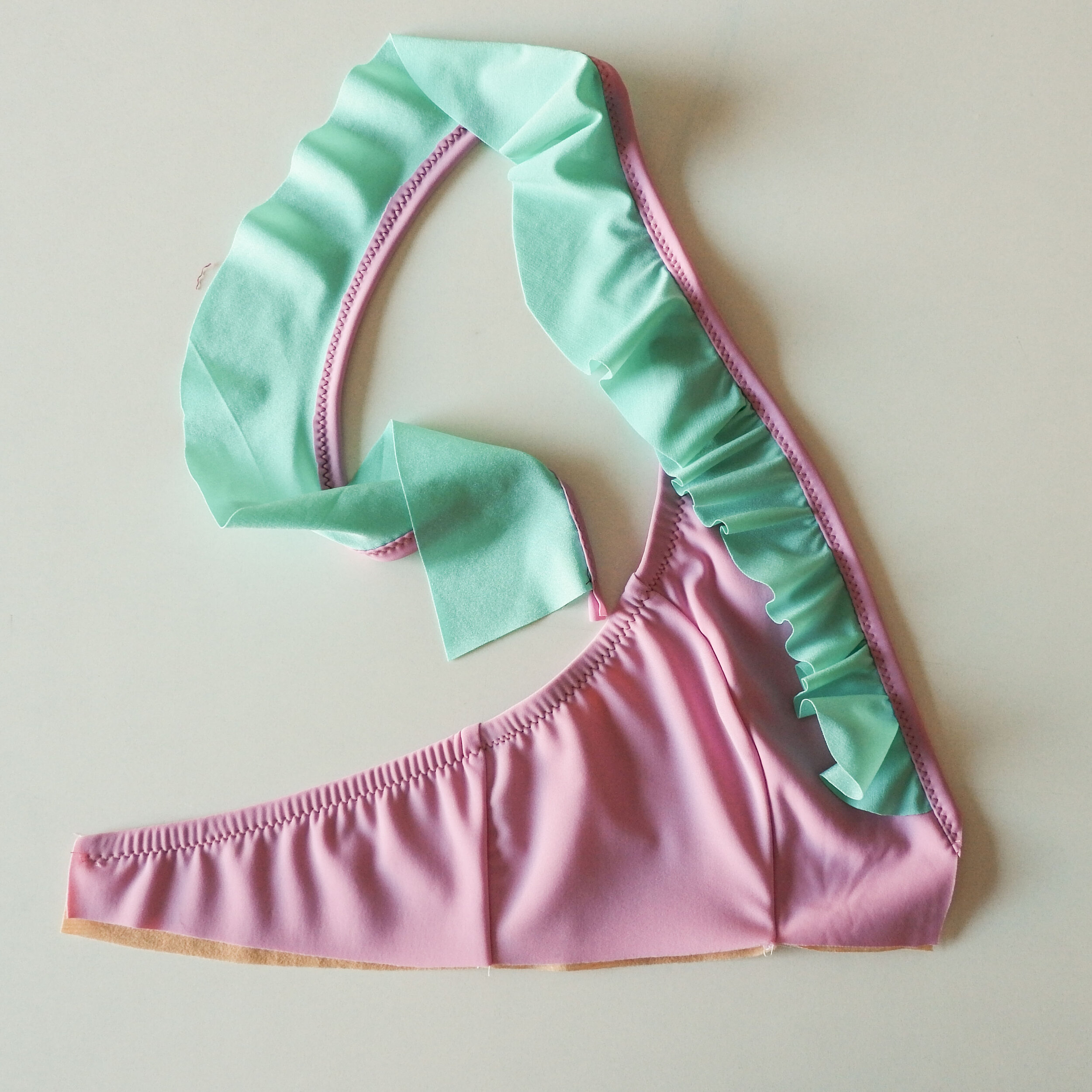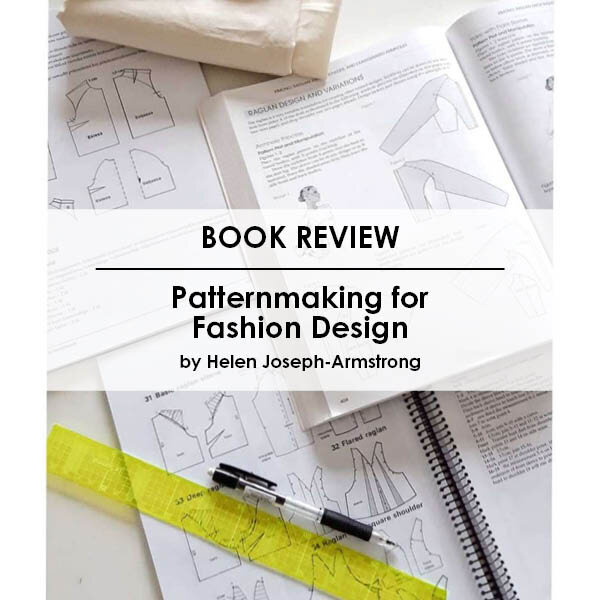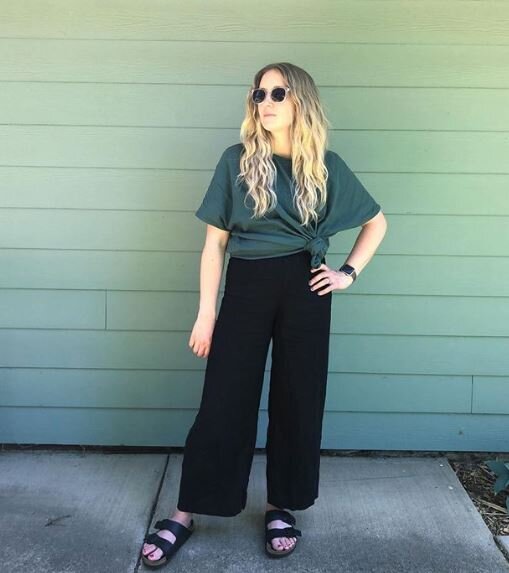Last month I published a book review about one of my favourite pattern making books Patternmaking for Fashion Design by Helen Joseph-Armstrong. I also mentioned that I have another favorite so here’s the second book review, this time about a book called Metric Pattern Cutting for Women’s Wear by Winifred Aldrich.
This is another well known pattern making textbook that has been used for a long time in universities and schools to teach pattern drafting. I have the 5th edition but there’s the 6th edition available now too. I got to know about this book through the online course Pattern Workshop as Lauran was using the children's version by the same author.
By the way, as I’m already mentioning the course, I’d like to really recommend it to you if you’re thinking about designing and selling your own digital PDF patterns. I heard about this e-course when I started to think about designing sewing patterns and it has really been the best investment I’ve made for my career as a pattern designer. I knew how to draft patterns on paper (and I still always draft on paper, try everything out and then digitize the final patterns) but I had no idea about how to turn these paper patterns into digital patterns. The course is amazing as it really takes you through the whole process and teaches you all you need to publish your own PDF patterns. I learned how to digitize and scale the patterns in Illustrator and how to work with InDesign to create pattern instruction booklets. I had no previous experience with those programs and I learned everything with Laurens clear video tutorials. Of course taking the course doesn’t mean you’ll instantly publish perfect PDF patterns after finishing the course, the real work begins when you actually start working on your own patterns and you’ll learn new things every day. But I really learned all the basics and super useful tricks about how to use these design programs specifically to create PDF patterns.
El mes pasado escribí la reseña sobre uno de mis libros favoritos de patronaje Patternmaking for Fashion Design de Helen Joseph-Armstrong. También mencioné que tengo otro favorito así que aquí va la segunda reseña, esta vez sobre el libro Metric Pattern Cutting for Women’s Wear de Winifred Aldrich.
Este libro también es muy conocido, lo llevan usando de libro de texto en las universidades y academias para enseñar patronaje desde hace tiempo. Yo tengo la quinta edición pero ya está disponible también la sexta. Conocí el libro a través del curso online Pattern Workshop donde usaban el mismo libro pero sobre patronaje para prendas infantiles del mismo autor.
Por cierto, ya que menciono este curso, os lo quería recomendar si estáis pensando en diseñar y vender vuestros propios patrones de costura en PDF. Conocí el curso justo cuando empecé a pensar sobre diseñar patrones de costura y ha sido la mejor inversión que he hecho en mi carrera como diseñadora de patrones. Yo ya sabía cómo patronar en papel (y sigo haciendo mis patrones en papel primero, hago todas las pruebas y luego digitalizo los patrones) pero no tenía ni idea sobre cómo convertir los patrones en papel al formato digital. Este curso es muy bueno porque te enseña todo el proceso para que puedas publicar tus propios patrones PDF. Aprendí cómo digitalizar y escalar los patrones en Illustrator y cómo trabajar en InDesign para crear los archivos de instrucciones. No tenía ninguna experiencia previa sobre estos programas y aprendí todo con los videos muy claros de Lauren. Obviamente si pasas el curso no significa que instantáneamente sacarás patrones perfectos, el trabajo real empieza después cuando te pones con tus patrones y el aprendizaje sigue cada día. Pero sí que aprendí todo lo básico y trucos muy buenos sobre cómo usar estos programas específicamente para crear patrones de costura.
So, about the book, there are a couple of things I really like about this one. The first one, as the title itself says, is that it’s metric pattern cutting. I don’t find working with inches very complicated as I’ve now gotten used to it but I have to admit that everything is way faster for me in the metric measuring system so it’s definitely a bonus if you’re not usually working in the imperial system.
This book has considerably less pages than the other book Patternmaking for Fashion Design but the information is nicely structured and the whole volume of the book is less intimidating I’d say.
The book is divided in four different sections starting with classic form cutting and pattern making methods to create the basic fitted blocks. First the close fitting and the easy fitting bodice blocks are explained, followed by tailored jacket block and classic coat block. Then the one and two piece sleeves, the sleeveless blocks and the dress block.
Ahora sobre el libro, hay un par de cosas que me gustan mucho en él. La primera es que como el título mismo indica, es patronaje en sistema métrico. No me parece muy complicado trabajar con pulgadas ahora que estoy más acostumbrada a ello pero tengo que decir que todo va mucho más rápido para mí si lo hago en sistema métrico así que desde luego es un bonus si no sueles trabajar en sistema imperial.
Este libro tiene considerablemente menos páginas que el otro libro Patternmaking for Fashion Design pero la información está muy bien estructurado y el libro en sí es más compacto y no abruma tanto como el volumen del otro, diría yo.
El libro está dividido en cuatro diferentes secciones empezando con el patronaje “clásico” y describe los métodos para crear patrones básicos para prendas ajustadas. Primero se habla de cuerpos base ajustados y semi ajustados, después vienen las bases de chaqueta sastre y abrigo. Después las mangas en una y dos piezas, cuerpo base sin mangas y el vestido.
The next chapter is dedicated to adaptations on bodice and sleeve blocks. I like the structure of the book as the technical drawings of the designs are all gathered together by type and followed by the pattern modification explained on the line drawing and in the text. I think that everything is really well explained on the drawings which makes it easy to rapidly get an overview. Again the fashion drawings might look a bit outdated but you’ll see many examples you can study to learn a lot about more complex pattern alterations.
In the following chapters collars, skirts, trousers, jeans, fitted jackets and coats are explained in detail.
La siguiente capítulo está dedicado a las modificaciones de cuerpo y manga base. Me gusta mucho la estructura de este libro porque los dibujos técnicos y los diseños están bien agrupados por diferentes tipos y justo al lado tienes las modificaciones explicados tanto en dibujo como en texto. Creo que todo está muy bien explicado en las ilustraciones y es fácil tener un resumen rápidamente. De nuevo los diseños pueden parecer un poco de otras épocas pero se ven muchos ejemplos que dejan que aprendas técnicas complicadas y diversas que luego puedes adaptar a tu gusto.
Después vienen capítulos sobre cuellos, faldas, pantalones, vaqueros, chaquetas ajustadas y abrigos que se explican en detalle.
Next there’s the second section of the book which is specifically about flat cutting to make easy fitting garments without using dart shaping or closed fitting shape fitting. Garments made from these patterns are looser fitting with more ease included. I think it’s a good way to experiment with easier pattern forms before going into all the dart manipulation happening with fitted blocks. Also many more contemporary designs actually are not so fitted so it’s an easy way to quickly draft some base patterns. There are many different styles of garment blocks based on this method explained. Apart from making these blocks for woven fabrics there’s also a separate chapter to draft easy fitting blocks for knit fabrics to make t-shirts, hoodies and tunics.
A separate chapter also explains how to draft patterns for close fitting knit garments like leggings, swimwear and close fitting t-shirts/dresses.
La segunda sección del libro va sobre patronaje de bases sencillas sin usar pinzas necesarias para patrones que se ajustan más al cuerpo. Las prendas que se hacen con este tipo de patrones tienen más holgura ya que son más amplias y no tan ajustadas al cuerpo. Creo que es una manera muy buena para experimentar con patrones base más sencillos antes de meterte en todo el tema de movimiento de pinzas y demás cosas que se hacen con patrones base ajustadas. También hay que decir que muchos diseños modernos realmente no son muy ajustados así que te explican maneras de cómo hacer patrones base de una manera más sencilla. En esta sección hay una variedad de diferentes estilos de patrones basadas en este método. Aparte de hacer las bases para telas planas también te explican cómo hacerlo para telas de punto en un capítulo aparte.
En otro capítulo vienen las instrucciones sobre cómo hacer patrones ajustados para telas de punto como leggings, ropa de baño y camisetas/vestidos ajustados.
The third section of the book is about size and fit, basic grading techniques are explained. The chapter I really like is about drafting blocks and fitting for individual figures which might be the most interesting one for home sewers. There are instructions about how you can use personal measurements to draft the basic blocks as described in the first section of the book and what you should take into consideration if you do so.The rest of the chapter covers more common fit problems and you can identify how to fix your patterns: sleeve/shoulder issues, how to fix bust issues and what to do with the necklines if their not perfectly fitting etc.
The last section of the book is about computer generated design and pattern making, I honestly haven’t read it thoroughly as it’s more about software etc, hehe.
So in conclusion, I really like this book. I think that the best part is that the drawings are really clear and easily understandable and there are all the more common design alterations you need. I also like that the book covers different ways of drafting patterns, separately for close fitting and easy fitting styles. I think it’s a good resource when you’re starting out on your patternmaking journey! I hope you found this review useful :)
La tercera sección del libro es sobre tallas y el ajuste de prendas, también se explican las bases de escalado. Me gusta mucho el capítulo sobre cómo hacer los patrones base a medida para personas concretas, creo que es el capítulo más interesante para las que cosen en casa. Vienen instrucciones sobre cómo usar medidas personales para hacer patrones con el método explicado en la primera parte del libro y qué cosas deberías mirar si no usas medidas que vienen en cuadros de tallas. El resto del capítulo explica cómo arreglar problemas que salen a la hora de hacer las pruebas: para que queden bien las mangas y hombros, cómo modificar patrones para diferentes tamaños de pecho y qué hacer si el escote no se ajusta bien etc.
La última sección del libro va sobre patronaje en ordenador y programas de patronaje, la verdad es que no lo he leído mucho porque va más sobre software etc, jeje.
Así que en conclusión, me gusta mucho este libro. Creo que la mejor parte es que los dibujos técnicos son muy claros y en el libro vienen todas las modificaciones más comunes que necesitas saber. También me gusta mucho que te explican diferentes métodos para crear patrones base tanto para prendas ajustadas como holgadas. Creo que es un libro bueno para tener si empiezas a aprender patronaje! Espero que esta reseña haya sido útil :)


























































































































































